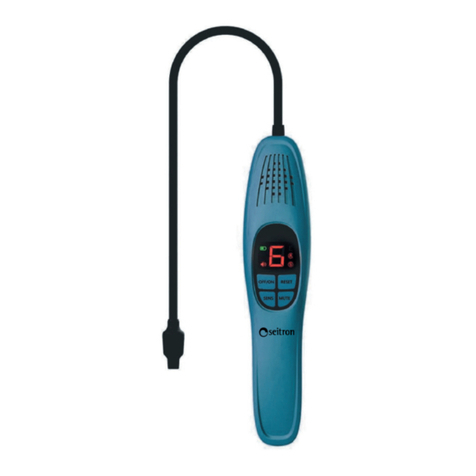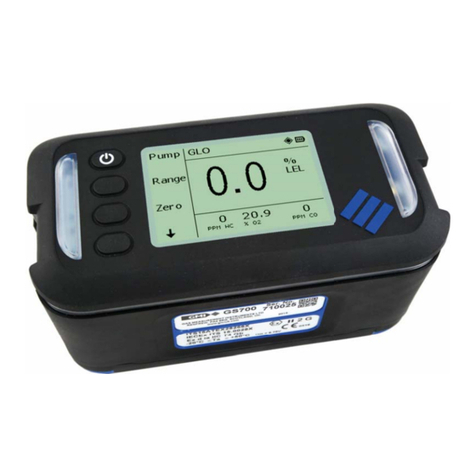Solight 1D31 User manual

EN Solight 1D31 Carbon Monoxide Detector
User Guide
Dear customer, thank you for purchasing our product. Please carefully read and abide by the following instructions to ensure that
this product is used safely and to your complete satisfaction. This will also help avoid any improper use or damage. Prevent any
unskilled handling of the device and always following the principles of use for electrical appliances. Store this User Guide is a safe
place. For use in the home or indoors. The product should only be used by adults. Never expose the device to high levels of
humidity (e.g. in a bathroom), and prevent the product from coming into contact with liquids. Do not allow the device to be placed
near or come into contact with home electronics or computers.
WARNING: This alarm device indicates the presence of carbon monoxide only in the vicinity of the sensor. Carbon
monoxide may also occur in other places.
The product is designed for indoor use in the home. It is not designed for taking measurements pursuant to the trading and industrial
standards of the European Agency for Safety and Health at Work (OSHA).
CAUTION: This device is designed to protect from the acute effects of carbon monoxide. It cannot necessarily protect
people with a specific illness. If in doubt, consult your doctor.
Persons with medical problems who are especially susceptible to CO carbon monoxide should consider using another warning
device which reacts to concentrations of carbon monoxide below 30 ppm. This alarm is designed to detect concentrations of carbon
monoxide exceeding 70 ppm.
Introduction
This carbon monoxide detector alarm is effective for detecting heightened concentrations of carbon monoxide (also known as CO
gas) at home or in the office. Alarm features:
1) Easy to install
2) Continual monitoring of carbon monoxide
3) Loud alarm sound (85 dB) when heightened concentrations of carbon monoxide are detected
4) TEST button, allowing the alarm to be tested at any time
5) Complies with the requirements stipulated by the EN50291 standard
6) 5-year lifetime of carbon monoxide sensor
7) Detection principle: electrochemical cell
USEFUL INFORMATION ABOUT CARBON MONOXIDE
Carbon monoxide (chemical symbol CO) is a highly hazardous poisonous gas which is colourless, odourless and tasteless, yet
highly toxic. From a biochemical viewpoint it can generally be said that the presence of carbon monoxide inhibits the blood’s ability
to transfer oxygen around the body, which may result in brain damage.
In every enclosed space (flat, office, vehicle or boat) small accumulations of this gas may pose a relatively serious danger.
Although many other by-products of combustion may cause difficulties and may have harmful effects, it is carbon monoxide that
poses the greatest risk of fatality.
Carbon monoxide is created when fuel is imperfectly burned, such as natural gas, propane, heating oil, kerosene, coal, charcoal,
petrol, or wood. Fuel can be imperfectly burned in anything which uses combustion to generate energy or heat, such as furnaces,
boilers, heaters, water heaters, stoves and grills, as well as in vehicles and equipment powered by a petrol engine (e.g. generators,
lawnmowers). Carbon monoxide is also contained in tobacco smoke and enters the air we breathe together with this smoke.
The air is not polluted by carbon monoxide if the natural gas combustion equipment (e.g. boiler or water heater) is correctly
installed and maintained. Natural gas is known as a “clean-burning” fuel, as under the right conditions the combustion products only
consist of water steam and carbon dioxide (CO2), which is not toxic. Combustion products are drawn off through an exhaust pipe or
chimney.
The following conditions may lead to temporary accumulations of CO:
1) Excessive leakage of fumes from combustion equipment or reverse flow of gas due to external conditions, such as wind
speed and/or direction, including strong gusts of wind; compressed air in exhaust pipes (cold/moist air with longer periods
between cycles).
2) Negative pressure differences due to the use of extractor fans.
3) Operating several pieces of combustion equipment at the same time, which together combine to reduce the amount of air
inside.
4) Exhaust connections from clothes driers, boilers or water heaters that have been loosed as a result of vibrations.
5) Obstructions in exhaust pipes or unconventional exhaust systems which make the above situation worse.
6) Operating combustion equipment with no exhaust system for longer periods (cookers, ovens, fireplaces, etc.).
7) Temperature inversions, as a result of which combustion products remain at ground level.
8) An idling vehicle engine in an open or closed garage adjacent to or near the house.
Potential sources of carbon monoxide in your home or office include: a blocked chimney, wood-burning stove, open wood or
natural gas fireplace, car and garage, gas water heater, gas appliance, gas or kerosene heater, gas or oil boiler, cigarette smoke.
IT111935JB160325S

Symptoms of carbon monoxide poisoning:
The following symptoms are associated with carbon monoxide poisoning and it is important that all members of the household are
aware of them:
1) Mild exposure: slight headache, nausea, vomiting, fatigue (often described as the symptoms of flu).
2) Medium exposure: severe throbbing headache, sleepiness, wooziness, vomiting, rapid heartbeat.
3) Extreme exposure: unconsciousness, cramps, heart and/or respiratory failure, death.
The many recorded cases of CARBON MONOXIDE POISONING indicate that the victims are aware that they do not feel well, but
are so disoriented that they are unable to save themselves, i.e. they are unable to leave the building and call for help. Small
children and pets are usually afflicted first. Exposure when asleep is particularly hazardous, as the victim does not usually wake up.
Installing the alarm - location
As carbon monoxide moves freely in the air, the alarm should be installed in places where the occupants of the house sleep, or in
the immediate vicinity. The human body is most susceptible to the effects of CO when asleep. For maximal protection the alarm
should be places near sleeping areas or on each floor of your house. The diagram below shows some recommended places in the
home. The electronic sensor detects carbon monoxide, measures its concentration, and triggers the alarm if concentrations reach
potentially harmful levels.
Do not install the alarm:
a) in places where the temperature may fall below 40⁰F (4.4⁰C) or may exceed 100⁰F (37.8⁰C)
b) in places where solvent fumes may be present
c) within 5 feet (1.5 metres) of a naked flame, such as a furnace, stove or fireplace
d) in the exhaust from gas engines, into air vents, smoke flues or chimneys
e) near a vehicle exhaust; this would destroy the alarm.
Installing the alarm
1. The alarm should be installed on the wall or ceiling
2. The 9V battery should be inserted into the compartment on the back of the alarm. It is essential to respect the polarity
shown on the bottom of the battery compartment.
3. Drill holes to match the holes on the alarm casing in the place where you intend to install the alarm.
4. Use the two screws and wall plugs supplied; do not apply too much pressure to tighten the screw. If needed use more
suitable fixtures.
5. Place the detector with battery inserted to the rear plate and rotate it to fix it.
IMPORTANT: Not suitable as a smoke or fire alarm. This device is not suitable for installation in a hazardous location, as defined
the National Electrical Code. Do not use alarm in an outlet that is controlled by a wall switch.
Bedroom
Bedroom
Bedroom
Garage
Living room
Basement
Kitchen
Back
Detector
Screw
Screw

Testing your alarm
A red light indicates that power is supplied. To test the alarm (do not test when alarm is at warm up mode), press the test button
and the alarm will beep intermittently and the red LED will flash. Release the Test button, the beep and the red LED will stop and
flash every 30s.
A malfunctioning unit is indicated by beep-sounding on and off sequentially, i.e., beeping twice every 30 seconds. If this occurs,
attempt to disconnect the power supply to the unit for 10 seconds and then power the unit again. Should the unit again beep
intermittently, DO NOT uses this alarm. Send the malfunctioning unit to the manufacturer for servicing.
Operating the alarm
a) Normal Operation When no carbon monoxide is present, the red power light will flash once approximately every 30
seconds.
b) Alarm Condition When the unit detects carbon monoxide, it will give the alarm signal continuously. The red alarm light will
flash and the buzzer will sound approximately 2 times per 4 seconds.
c) Hush Feature If required, the audible alarm can be silenced for 6-10 minutes by pushing the button marked “Test/Hush”.
The red alarm light will continue to flash. If carbon monoxide is still present
d) Fault Warning If a fault is detected the buzzer will sound 2 short chirps every 30 seconds. The alarm must then be
replaced.
e) Battery Fault Warning The buzzer will sound 1 short chirp approximately every minute.
Note: The red LED flash every 6-15s and buzzer beeps as the sequence that 4 beeps, pause, 4 beeps pause, when you press the
Test button.
What to do if the alarm sounds
If harmful concentrations of CO are detected, the alarm will switch to continuous alarm mode. In such case, immediately take the
following steps:
1) If anyone in the room is feeling any of the effects of carbon monoxide poisoning, such as headache, dizziness, nausea or
other flu-like symptoms, immediately call an ambulance and the fire brigade. All persons and animals must be evacuated
immediately. Count everyone present, including the animals, to make sure nobody has been forgotten.
2) Do not re-enter the affected area until the problem has been resolved and the carbon monoxide dispersed. Concentrations
of carbon monoxide must have reached safe levels. The alarm will automatically stop warning of hazardous
concentrations of CO once they have dropped to a safe level.
3) If no symptoms of poisoning occur, press the RESET/SILENCE button and go out into the fresh air.
4) If the alarm is reactivated after 8 minutes, call the fire brigade and a technician to check the combustion device for carbon
monoxide emissions.
Procedure after rectifying the problem
Once the carbon monoxide concentration has fallen to a safe level, the alarm should turn off automatically. After 10 minutes test the
alarm by pressing the TEST button, to ensure that it is working properly.
Specifications:
Appendix:
Product is conformed with requirements of the EU market with EN 50291:2010 standard.
Recommended date of replacement: up to 5 years from production date. Production date is printed on the rating label or imprinted
on the plastic cover from the inside of the product.
Notified body number and name which ensured certification for EU: ECM Savignano, IT. Number: 1282.
Certificate number: IT111935JB160325S
Manufacturer:
Ningbo HI-TECH Park Jabo Electronics Co., LTD
Building 6, No. 799 Lingyun Road, Ningbo Hi-Tech Park, Ningbo, China
Importer: Solight Holding, s.r.o., Štěrboholská 1434/102a, 102 00 PRAHA, www.solight.cz
Acoustic
alarm
Alarm level
Operating
temperature
Humidity
range
Min. 85dB at
a distance of
3m
300 ppm
100 ppm
50 ppm
Pursuant to EN50291
standard
for 3 minutes
for 10-40 minutes
for 60-90 minutes
0°C to +49°C
30 to 90% RH
Table of contents
Other Solight Gas Detector manuals
Popular Gas Detector manuals by other brands
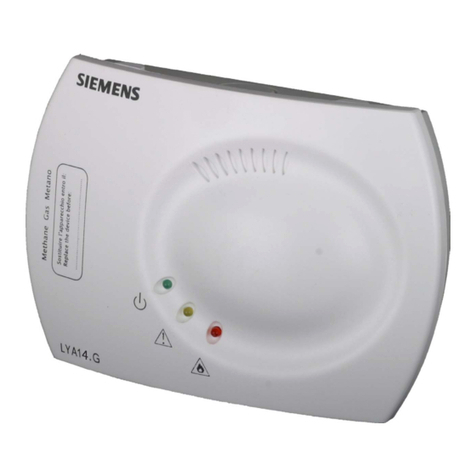
Siemens
Siemens INTELLIGAS LYA14 Series quick start guide
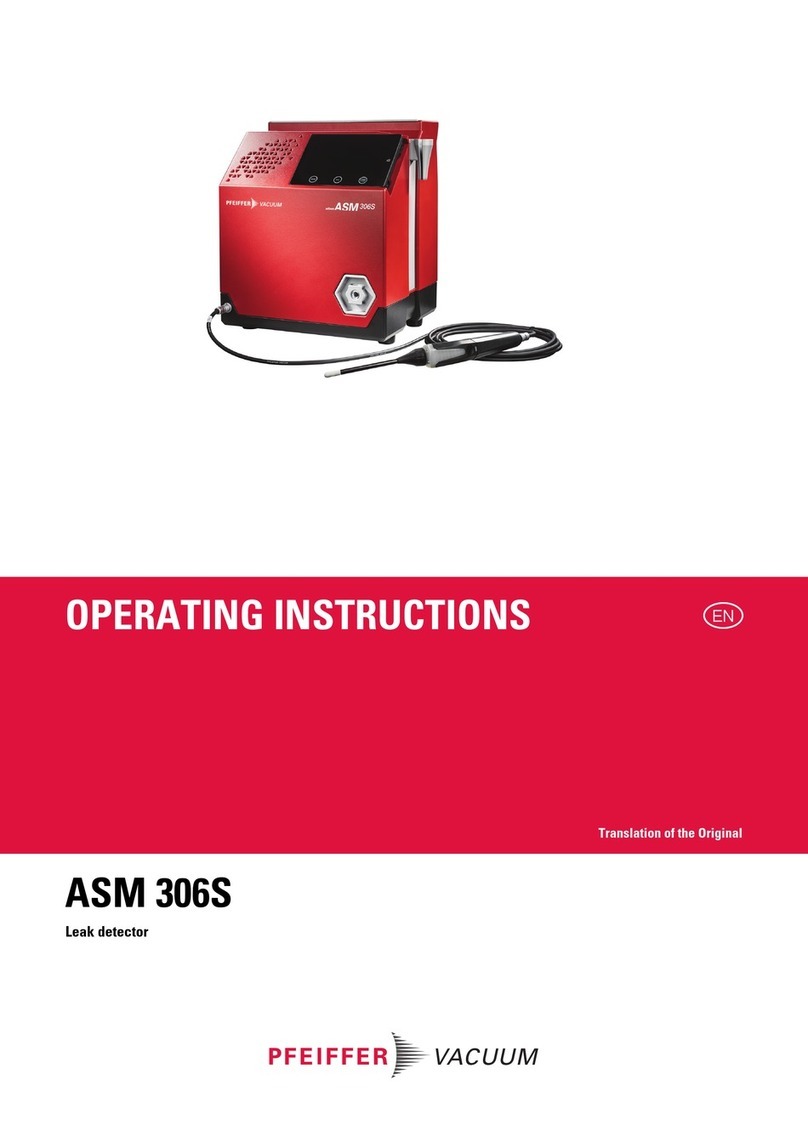
Pfeiffer Vacuum
Pfeiffer Vacuum ASM 306S operating instructions

Riken Keiki
Riken Keiki SD-1OX operating manual

New Cosmos Electric
New Cosmos Electric NV-100H instruction manual
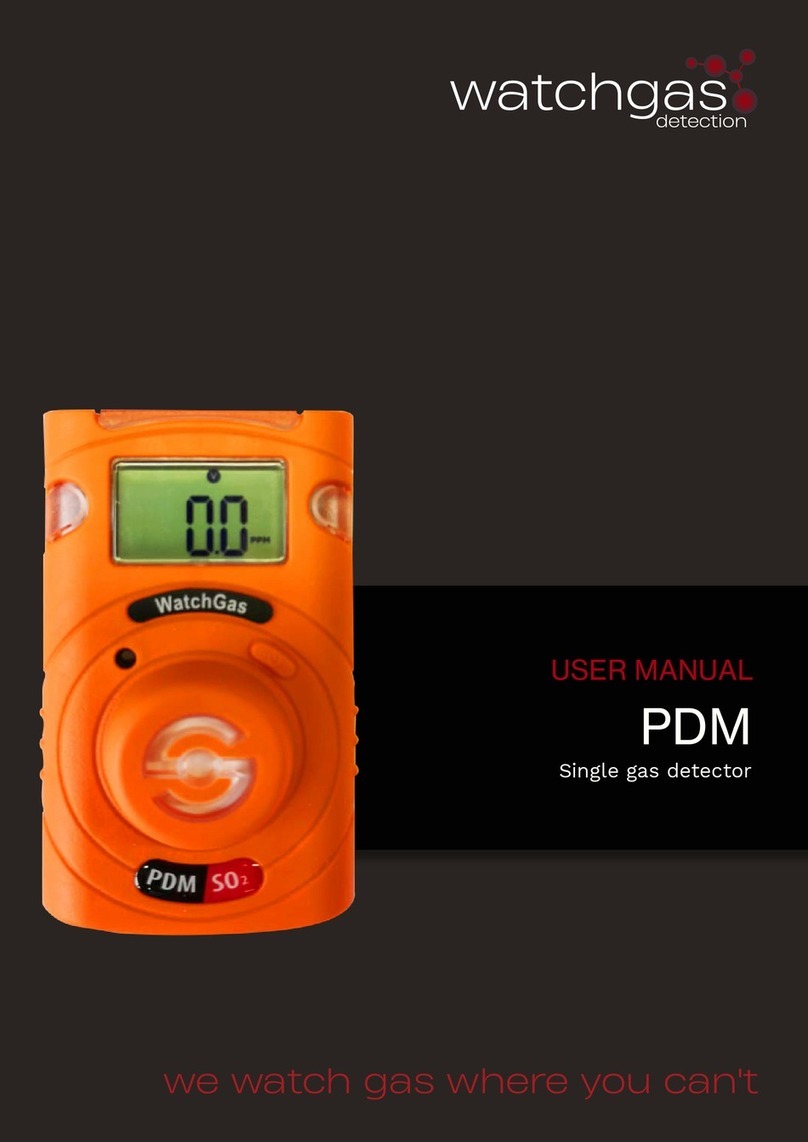
WatchGas
WatchGas PDM user manual
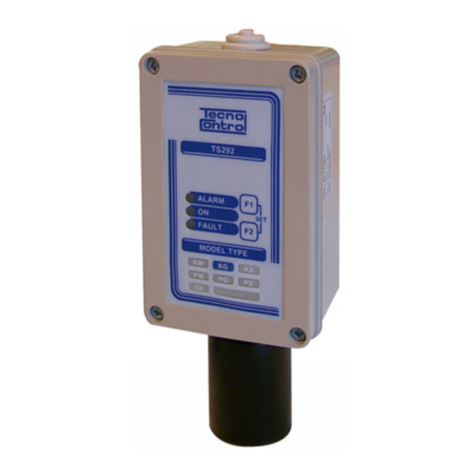
Techno Control
Techno Control TS220SF Series user manual
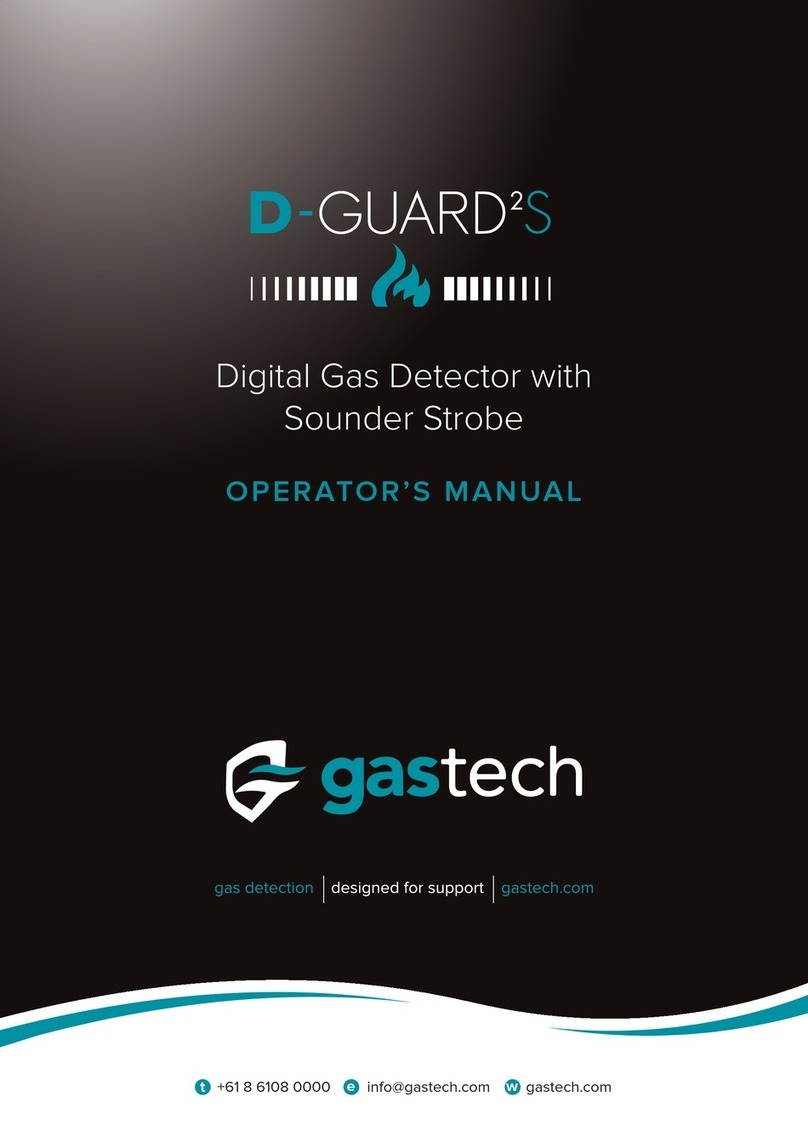
GasTech
GasTech D-Guard2S Operator's manual

New Cosmos Electric
New Cosmos Electric NV-100C instruction manual
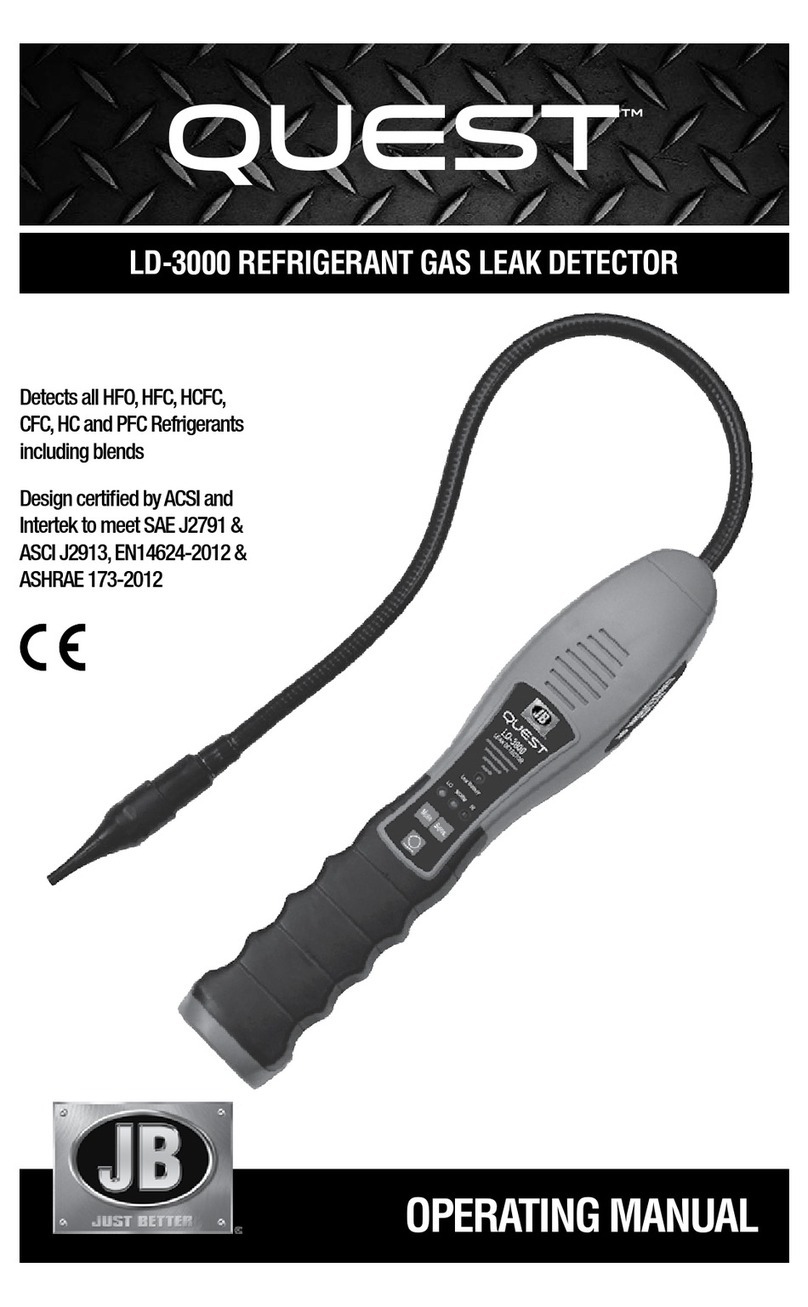
JB
JB QUEST LD-3000 operating manual
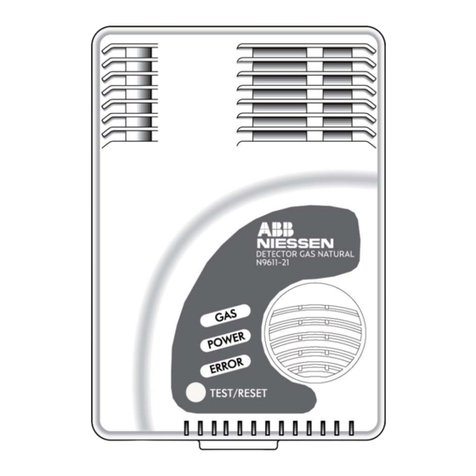
ABB
ABB N9611-21 Installation and use manual
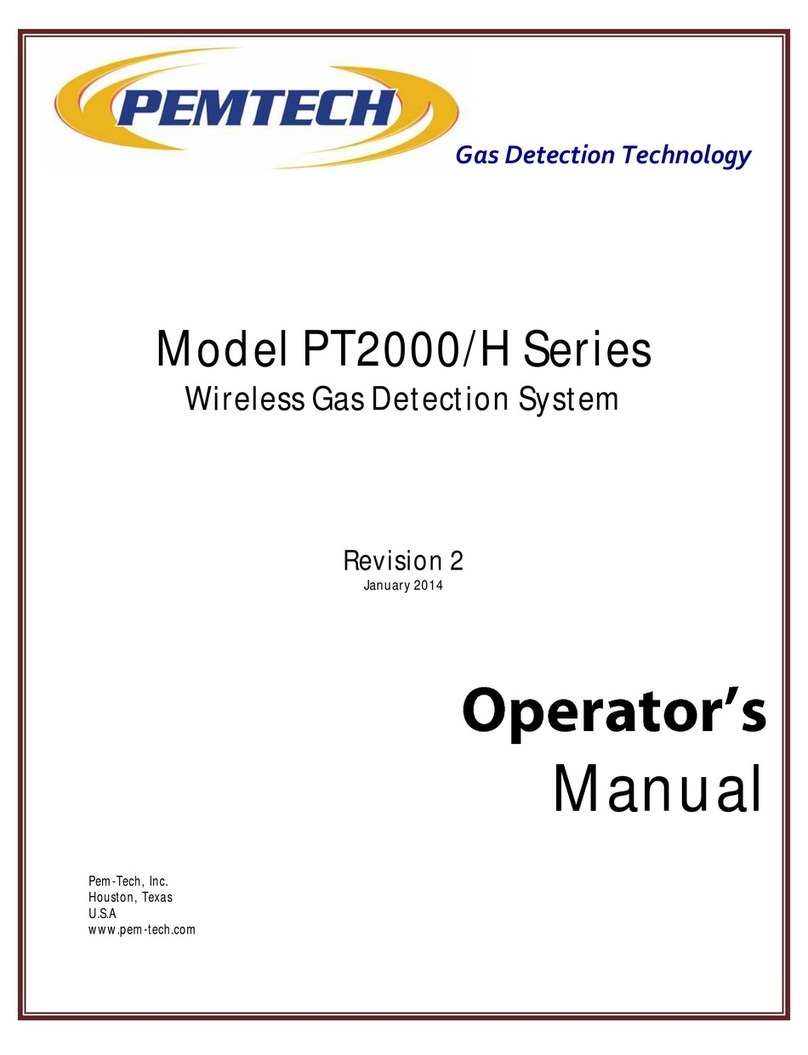
PEMTECH
PEMTECH PT2000/H Series Operator's manual

yellow jacket
yellow jacket 69373 Series Instruction and operation manual



